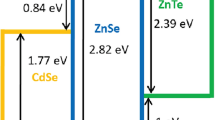Abstract
We are investigating the thermodynamic conditions under which condensation occurs in laser ablated copper plasma plumes. The plasma is created by XeCl excimer laser ablation (308 nm, 300 mJ/pulse) at power densities from 500–1000 MW/cm2 into backing pressures of helium in the range 0–50 torr. We use laser-induced fluorescence (LIF) to probe velocity and relative density of both atomic copper and the copper dimer molecule, Cu2, which is formed during condensation onset. At low pressure (10 mtorr), the atomic Cu velocity peaks at approximately 2×106 cm/s. Copper dimer time-of-flight data suggest that condensation onset occurs after the Cu atoms have slowed very significantly. Excitation scans of the Cu2A-X (0,0) and (1,1) bands yield a rotational and vibrational temperature in the neighborhood of 300 K for all conditions studied. Such low temperatures support the theory that Cu2 is formed under thermally and translationally cold conditions. Direct laser beam absorption is used to determine the number density of atomic copper. Typical densities attained with 5 torr of helium backing gas are 6–8×1013 cm−3. Rayleigh scattering from particulate is easily observable under conditions favorable to particulate production.
Similar content being viewed by others
References
E.A. Rohlfing, J.J. Valentini: J. Chem. Phys. 84, 6560 (1986)
See, for example, X.D. Wu, R.E. Muenchausen, S. Foltyn, R.C. Estler, R.C. Dye, C. Flamme, N.S. Nogar, A.R. Garcia, J. Martin, J. Tesmer: Appl. Phys. Lett. 56, 1481 (1990)
J.L. Lyman: Synthesis of materials with infrared and ultraviolet lasers, SPIE Proceedings # 1033 International Conference on Trends in Quantum Electronics, Central Institute of Physics, Bucharest, Romania (1988)
D.E. Powers, S.G. Hansen, M.E. Geusic, D.L. Michalopoulos, R.E. Smalley: J. Chem. Phys. 78, 2866 (1983)
B.H. Weiller, P.S. Bechthold, E.K. Parks, L.G. Pobo, S.J. Riley: J. Chem. Phys. 91, 4714 (1989)
F.W. Froben, J. Kolenda, K. Moller: J. Phys. D 12, 485 (1989)
R.H. Page, C.S. Gudeman: J. Chem. Phys. 94, 39 (1991)
H.-L. Chen, G. Erbert: J. Chem. Phys. 78, 4985 (1983)
J.T. Verdeyen: Laser Electronics (Prentice-Hall, Englewood Cliffs, NJ 1981) pp. 179–183
A.D. Sappey, J.B. Jeffries: Appl. Phys. Lett. 55, 1182 (1989)
W. Demtroder: Laser Spectroscopy: Basic Concepts and Instrumentation, 2nd edn., Springer Ser. Chem. Phys. Vol. 5 (Springer, Berlin, Heidelberg 1981) pp. 42–114
Neglecting the transfer term relative to the A factor needs to be done with some care. Nearer to the surface at 5 Torr of He, the velocity of Cu is much higher, approximately 7 × 105 cm/s. This probably increases the rate of transfer considerably over the value predicted by the Chen and Erbert rate constant because of increased collision frequency at the higher velocity. This is because the Chen and Erbert 1900 K rate constant corresponds to a thermal Cu velocity of only 7 × 104 cm/s. However, the transfer rate even at 7 × 105 cm/s is still small enough with respect to the spontaneous emission rate to neglect. In the particular situation under consideration (Torr He; 2.5 cm from the target), the Cu velocity has decreased to less than 7 × 104 cm/s, so the rate of transfer is definitely small compared to the spontaneous emission rate
J.I. Steinfeld: Molecules and Radiation: An Introduction to Modern Molecular Spectroscopy (MIT Press, Cambridge 1981) pp. 26–28
Ya. B. Zel'dovich, Yu.P. Rayzer: Physics of Shock Waves and High Temperature Hydrodynamic Phenomena (Academic, New York 1966) Vol. I, pp. 93–106
V.E. Bondybey, G.P. Schwartz, J.H. English: J. Chem. Phys. 78, 11 (1983)
I.J. Wysong, J.B. Jeffries, D.R. Crosley: J. Chem. Phys. 94, 7547 (1991)
A.D. Sappey, T.K. Gamble, P.J. Wantuck, H.H. Watanabe, B. Benjamin: Diagnostic studies of laser ablated iron plasmas, Los Alamos Unclassified Report # 90, 3258 (1990)
Author information
Authors and Affiliations
Rights and permissions
About this article
Cite this article
Sappey, A.D., Gamble, T.K. Laser-fluorescence diagnostics for condensation in laser-ablated copper plasmas. Appl. Phys. B 53, 353–361 (1991). https://doi.org/10.1007/BF00331827
Received:
Accepted:
Issue Date:
DOI: https://doi.org/10.1007/BF00331827




